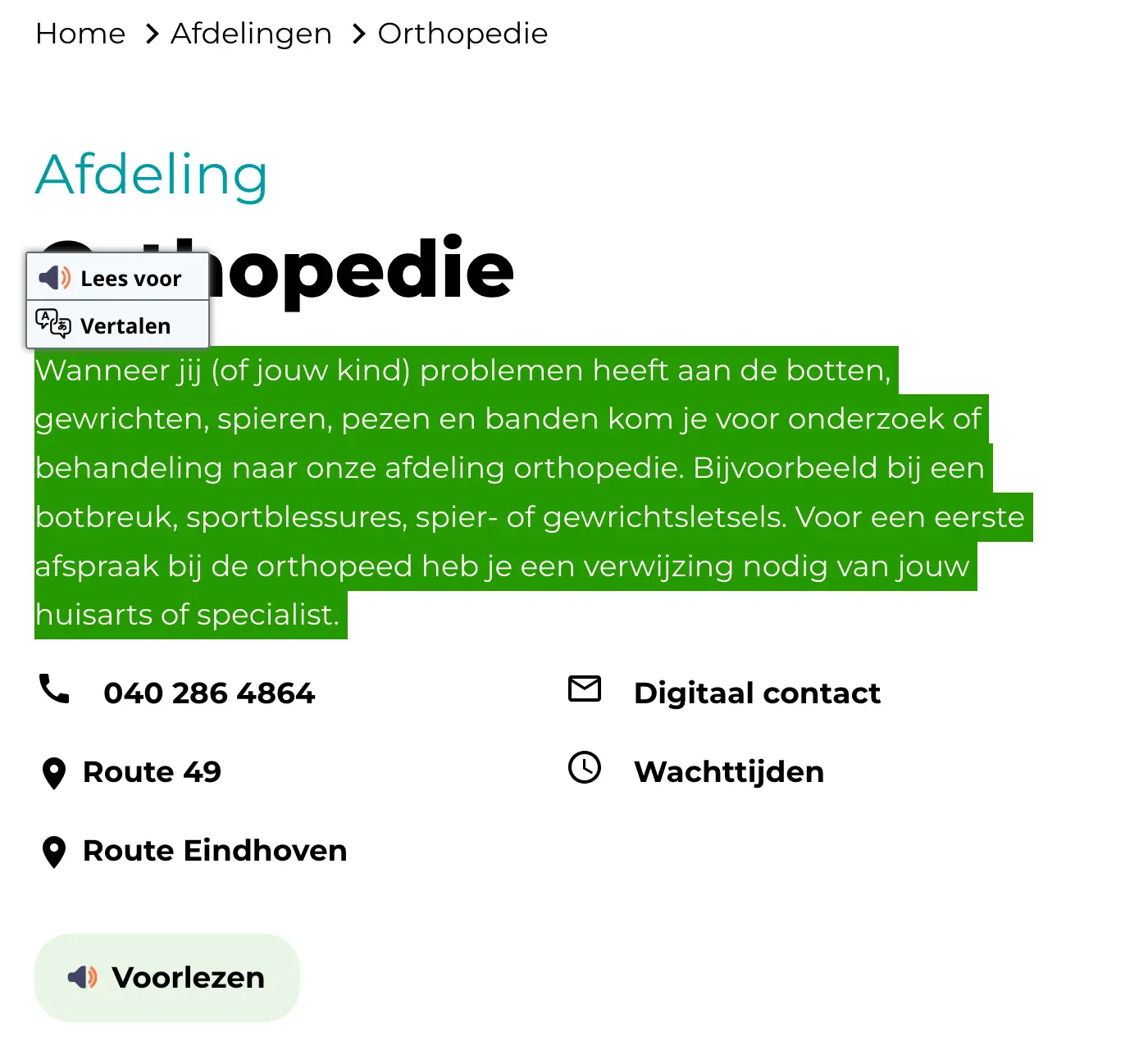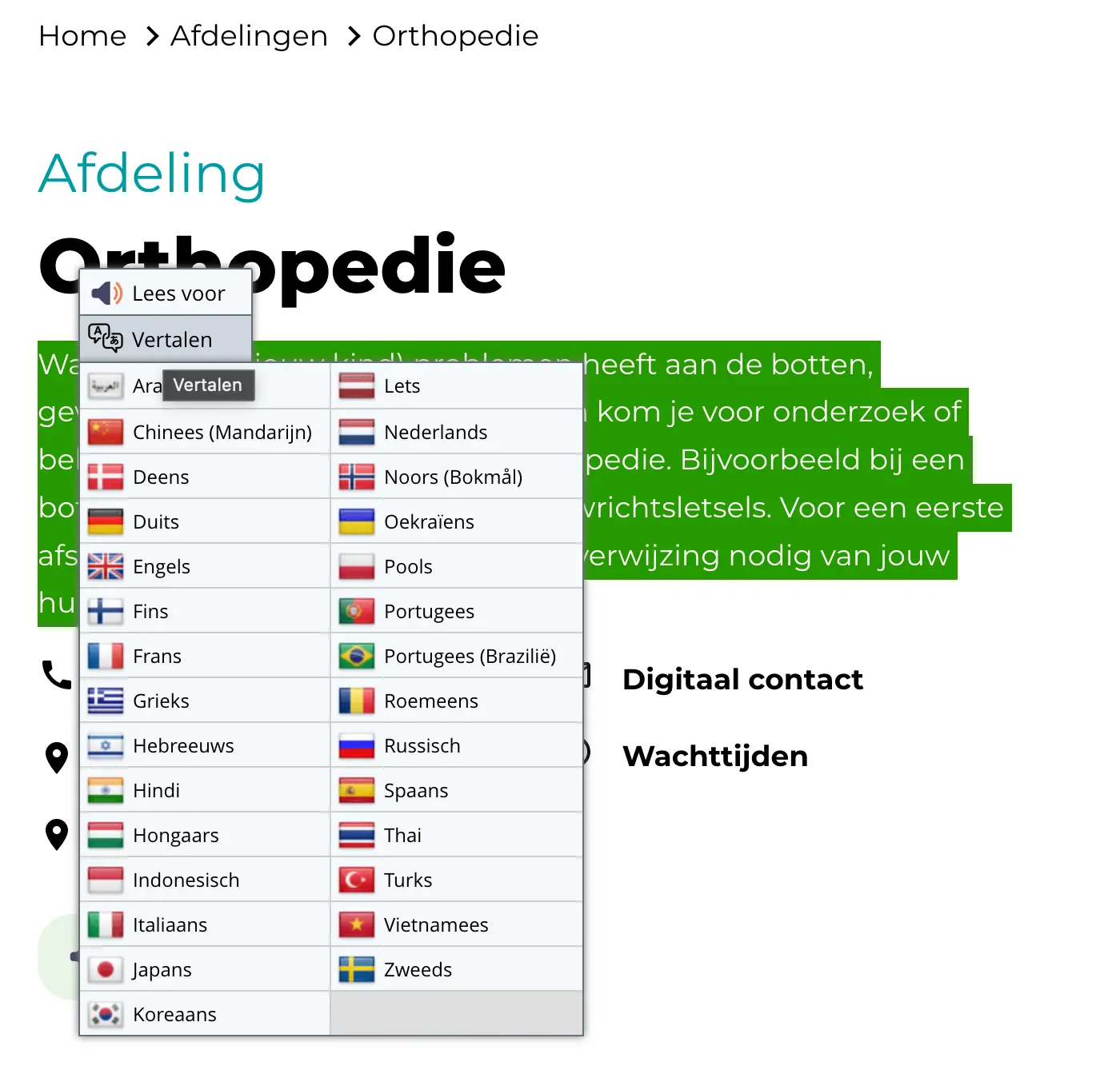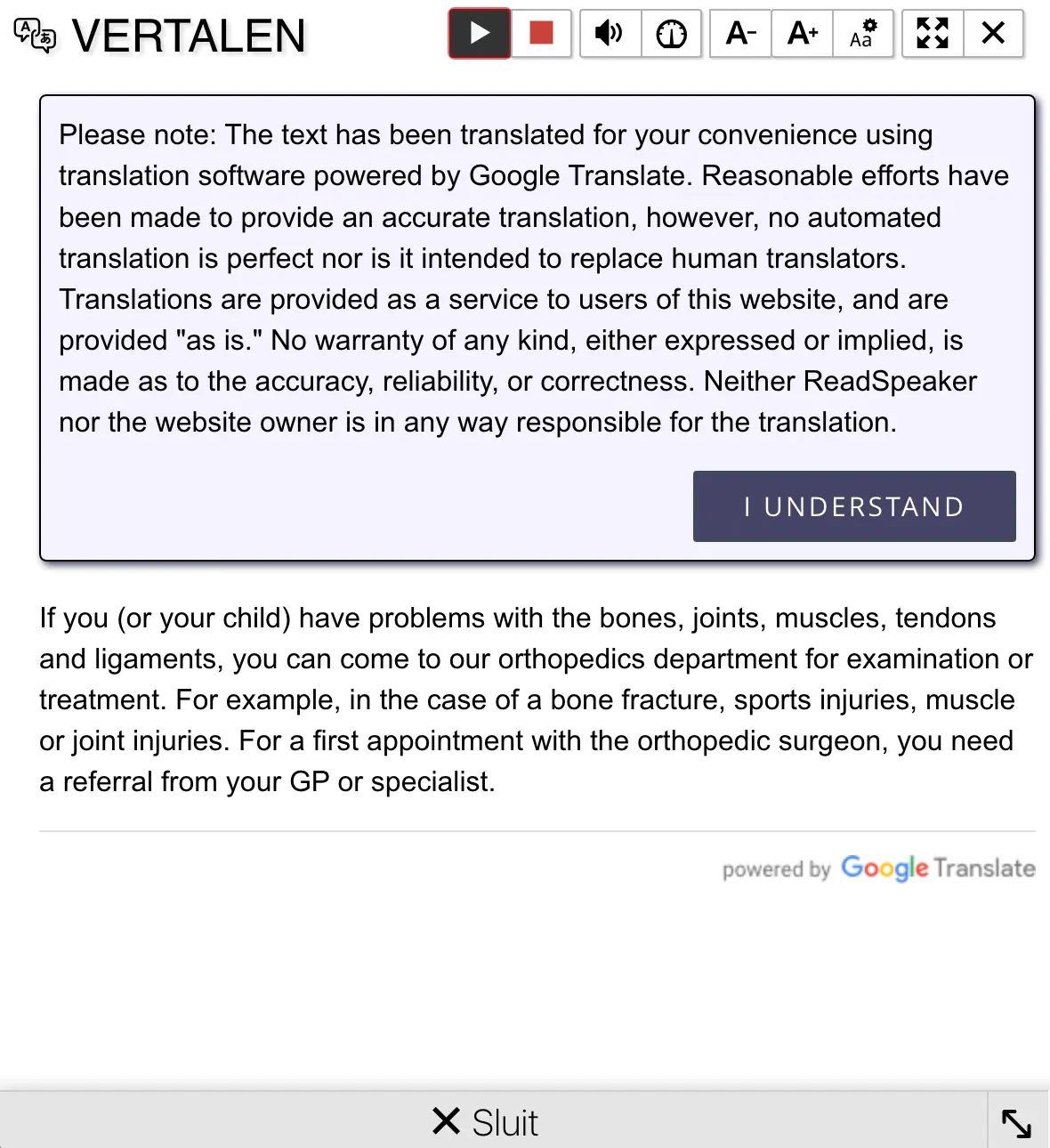Water birth
Gynaecologie
This leaflet provides information about giving birth in a birthing pool. In addition, we go into a few practical matters and provide some other useful information. If you have any queries after reading this leaflet, you can follow up with your own obstetrician, or inquire at the outpatient clinic if you are under the care of a gynaecologist.
A water birth in hospital, how does it work?
An inflatable birthing pool can be set up in the delivery suite at Anna Hospital during labour. A cover is placed in the birthing pool for hygiene reasons. The bath fills completely within one hour. There are no charges for using the birthing pool.
The birthing pool is set up as soon as you arrive here in the hospital, provided there are no contra-indications.
The water is kept at a constant temperature (37-37.5 degrees Celsius). You decide how long you wish to stay in the birthing pool, provided it is safe to do so.
The advantages of water birth
Warm water has a relaxing effect, which means your body will produce more endorphins. Endorphins are a kind of natural pain reliever and slightly dull the pain of the contractions. As a result of this relaxation, some women experience less anxiety, tension and pain. This may reduce the need for pain medication. Dilation may accelerate due to increased production of the hormone oxytocin.
You can move more easily in water, making it easier for you to change position during labour. It is always advisable to change position in the birthing pool regularly and to step out of the pool every now and then. This is also the time to use the toilet to ensure your bladder remains empty, which promotes dilation. It is possible to have an internal examination and for your waters to break in the birthing pool if desired, but you may be asked to step out of the pool for this.
A water birth enables the baby to make a smooth transition from the environment in the womb (in the amniotic fluid) to outside of the belly. The obstetrician then places the baby on your chest for immediate skin-on-skin contact.
The disadvantages of water birth
Water birth is safe in principle. However, uncertainty about the baby’s condition may arise during your labour. It may then be necessary to monitor you and your unborn baby outside of the birthing pool. This can be disappointing if you anticipated a water birth.
During labour, unexpected situations may arise that require immediate action. This is not always possible in the birthing pool. The obstetrician or gynaecologist will decide whether you need to switch to the delivery bed. Furthermore, a little water may accidentally enter the baby’s lungs and this could cause an infection.
Your partner’s role
Your partner cannot come into the birthing pool with you. We would however appreciate it if your partner, or whoever is accompanying you, could assist with setting up the birthing pool, maintaining the temperature of the water, and tidying up after delivery.
You can find more information about this on www.bevallingsbaden.nl
It is against hospital policy for you to be the only person in the room while you are in the birthing pool. Someone always needs to be in the delivery suite with you.
Water birth
Virtually everyone can give birth in a birthing pool, but sometimes there are reasons why this is not possible. These are listed below. It is not always possible for your child to actually be born in the birthing pool. However, it is often possible to use the pool for managing the contractions during dilation.
A filter is used to keep the water as clear as possible to ensure good visibility. Stools and blood clots therefore need to be removed as quickly as possible. In principle, delivery of the placenta takes place in bed after the umbilical cord has been cut. That way, we can monitor blood loss after delivery better.
If you would like to give birth in the birthing pool, you can inform the obstetrician or gynaecologist in clinic. We will then discuss with you whether it is safe to have a water birth in your case.
In some cases, the obstetrician managing the birth may decide that it is in your/your child’s best interests to give birth in the delivery bed. The safety of you and your child is always the first priority!
Reasons not to have a water birth
During dilation:
- Your child’s heartbeat cannot be registered effectively.
- If you have a temperature of over 38 degrees Celsius, or there are other signs of infection.
- You are taking pain medication in the form of an epidural, pethidine, or remifentanyl.
- A CTG that requires action (blood tests, assisted delivery).
- If your heart rate needs to be monitored (heart patients).
- HELLP or serious pre-eclampsia (in any case if you are receiving medication for this intravenously?).
- Blood-borne diseases such as HIV, hepatitis, etc.
- Condyloma (genital warts).
- Your waters have broken, but you are not having strong contractions yet.
- Diarrhea.
As the baby travels down the birth canal:
- Breech birth.
- Multiplets.
- Indication of need for assisted delivery (no progression/foetal distress).
- A history of shoulder dystocia.
- BMI >35 and/or weight >125 kg.
- Premature <36 weeks.
- Diabetes mellitus with insulin.
- Gestational diabetes with the expectation of a large baby.
- If your child’s weight is estimated to be >4500 grams.
- If a water birth is contraindicated for your child (e.g. gastroschisis).
- If you have a medical history of blood loss during childbirth, depending on the volume and cause (to be discussed between the healthcare provider and the patient).
- You are not mobile enough to get out of the bath independently.
Frequently Asked Questions
Can I use bubble bath soap or oils in the birthing pool?
No, the use of oils or bubble bath is not permitted in the birthing pool.
Does the water stay warm enough during the process?
The pool is well insulated because there is air in the sides. In addition, the water cools down very slowly because of the volume. The ideal water temperature is around 37 degrees, which is the same as your body temperature. This is the same temperature to which the baby has been accustomed for so long.
Is use of the birthing pool hygienic?
Yes. A special cover is placed in the pool, a new cover is used for each birth and the pool is thoroughly cleaned after the birth in accordance with strict hygiene regulations.
Can I remain in this room after giving birth?
If you are permitted to go home within a few hours of giving birth, you can remain here until you leave. If it is necessary to remain in hospital a little longer, you may have to move to a different suite. That way, we can ensure that as many people as possible can use this room and the birthing pool.
Can I reserve the birthing pool?
We cannot offer any guarantees. However, we will do our utmost to ensure you can use the birthing pool.
What should I bring?
Bring flip flops and a dressing gown (not essential, but very useful)
Questions?
If you still have questions after reading the brochure, you can go to your own obstetrician or if you are under control at the gynecologist at the outpatient clinic.
Gynecology outpatient clinic, telephone number 040 - 286 48 20.



